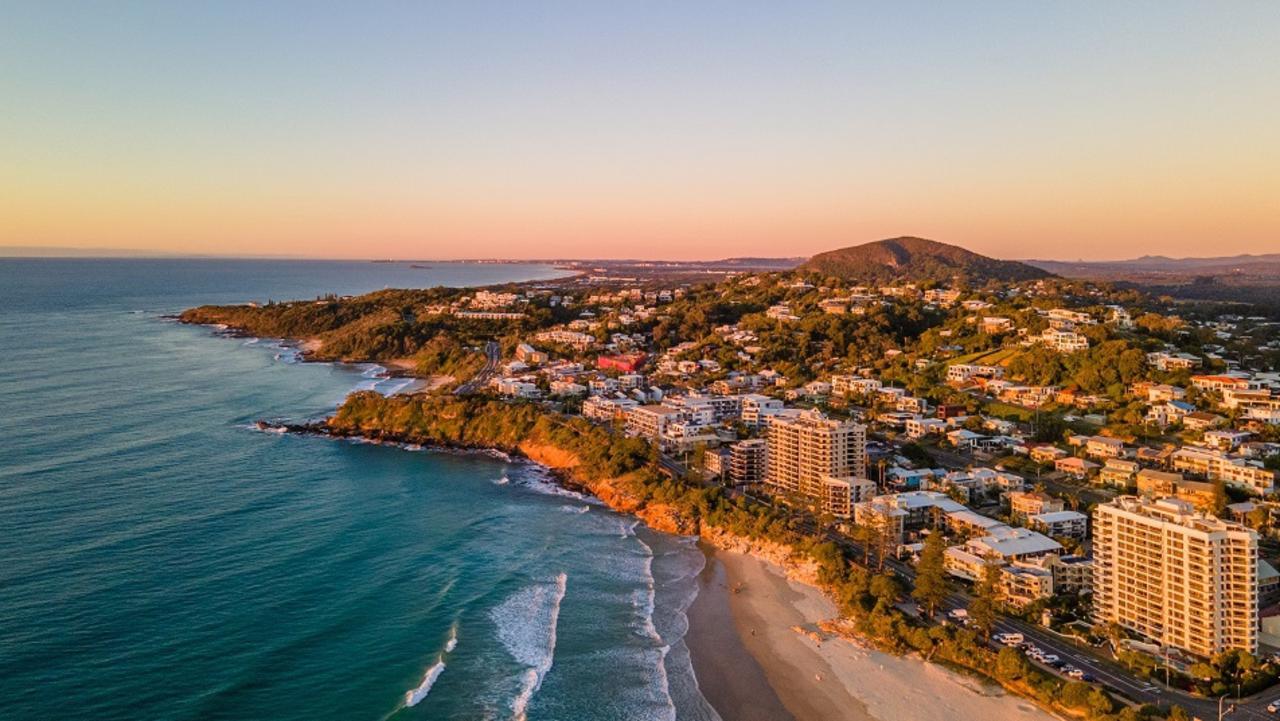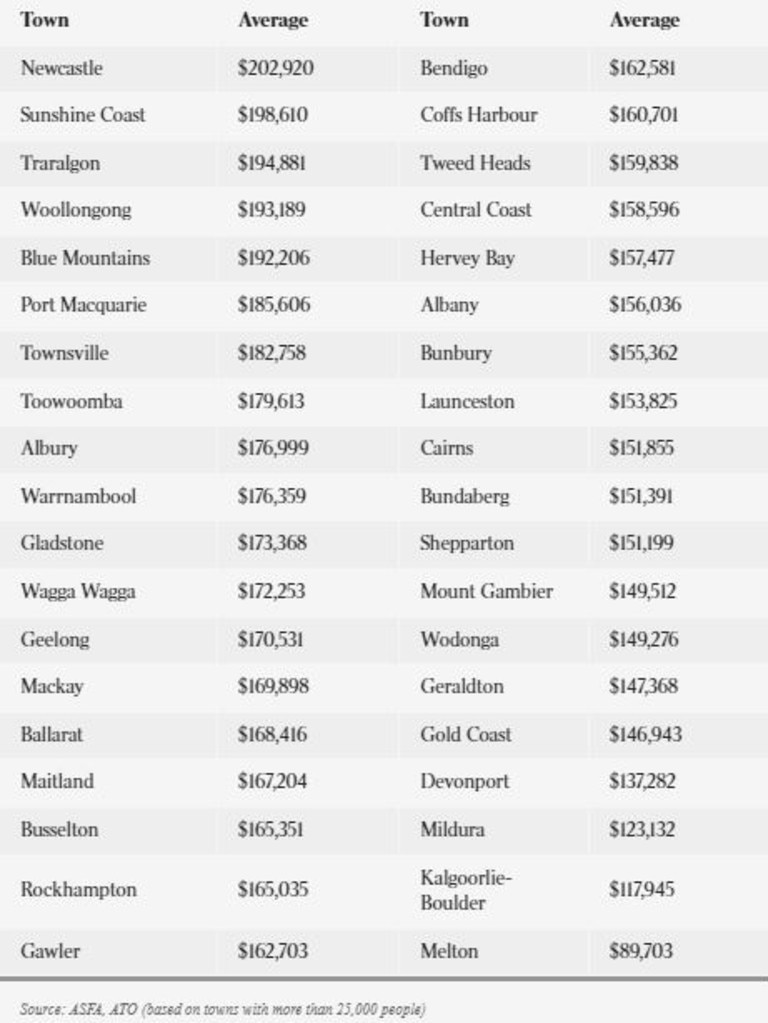How your superannuation balance measures up with cities and towns
Where you live is linked to how much super you have with the nation’s $3.5 trillion of superannuation not evenly spread. See what your city or town averages.

Huge differences in superannuation balances across Australia have highlighted the pressures shaping peoples’ abilities to build big retirement nest eggs.
A new analysis by the Association of Superannuation Funds of Australia has unveiled the locations of the biggest average super account balances, and the winners may surprise people.
While Canberra has the nation’s biggest average super account balance of $253,687, the next-highest are Newcastle ($202,920) and Sunshine Coast ($198,610), while Traralgon, Wollongong and Blue Mountains all have higher balances than every capital city.
ASFA examined Australian Taxation Office data from the 2020-21 financial year and found some electorates had average super balances up to four times higher than others in the same city.
For example, the average super balance in Sydney’s Wentworth electorate is $368,000 while in the Blaxland electorate it is $78,000, it found. Melbourne’s Kooyong electorate has a $385,000 average super balance but in Calwell it is $91,000.
Canberra’s nation-leading super balances were followed by Melbourne ($187,326), Adelaide ($184,047), Brisbane ($183,247), Hobart ($178,518), Sydney ($175,776), Perth ($173,397) and Darwin ($142,474).
ASFA deputy CEO Glen McCrea said factors behind the big differences in balances included ages, wages and other demographics.
“Age distributions differ markedly across Australia – reflecting the impact of internal migration, movements within Australia, and to a lesser extent international migration, and differences in birthrates,” he said.
“The relationship between age and super balance is complex.
“Older workers will tend to have higher super balances than younger workers, while older retirees will tend to have lower super balances than younger retirees, from drawdown of retirement savings.”
Mr McCrea said incomes in different regions differed depending on economic activity and occupations.
“Canberra has the highest average wages and salaries of all of Australia’s capital cities,” he said.
“While Darwin also has high average wages and salaries, it also has a relatively young and transitory working population”.

ASFA analysed capital cities and towns with more than 25,000 people and found that Melton in Victoria had the lowest average super balance of $89,703. Kalgoorlie-Bounder in WA was $117,945 and Mildura in Victoria was $123,132.
“Melton has a combination of relatively low average wages and salaries, and a relatively young working population – all else being equal, younger workers have a shorter history of super contributions compared with older workers, and therefore lower super balances,” Mr McCrea said.
In contrast, Newcastle’s links to the high-paying resources sector helped boost its super balances, he said.
MBA Financial Strategists director Darren James said super balances lower-socio economic areas were also impacted by the Morrison Government’s Covid-19 early release super scheme, which allowed people to drain up to $20,000 from their funds.
“More affluent people with larger account balances were not generally impacted,” he said.
Mr James said employment and population ages played a big role in determining an area’s average super balance.
ASFA’s data shows while Australia’s average super account balance is $179,191, the median balance – which is the midpoint of all accounts – is just $59,883.
Mr James said this lower number was not as alarming as it first appeared, as it would reflect younger workers early in their career and people with multiple super accounts.
“There is a big chunk of people still building, who have a long way to go,” he said.
“What does it look like for them in the long term, and where are they going to get to?”
Compulsory employers’ superannuation guarantee (SG) payments will rise from 10.5 to 11 per cent on July 1, part of an ongoing rise to 12 per cent in mid-2025, and ASFA said this would increase average super balances by $70,000-$100,000 at retirement.
Compulsory super started the decade at 9.5 per cent, and was just 3 per cent when in began in the 1990s.

“Workers who enter the workforce today will be contributing at higher SG rates, for longer periods, compared with previous generations of workers – which will be reflected in higher super balances,” ASFA’s Mr McCrea said.
“ASFA considers 12 per cent SG to be critical to helping individual retirees to achieve a dignified retirement and to improve the sustainability of the age pension and take pressure off future federal government budgets at the population ages,” he said.
However, the shift to 12 per cent does not please everybody, an adds an extra cost to small businesses and other employers.
Mr James said there were winners and losers from the move.
“It is tough for employers, depending on the nature of their pay arrangements with employees,” he said.
“It’s a fairly big impost on small businesses.
“On the other side, it’s a great thing for employees who are getting it. It closes the gap.
“The more that’s going in, the less the government needs to fork out later.”
More Coverage
Originally published as How your superannuation balance measures up with cities and towns





